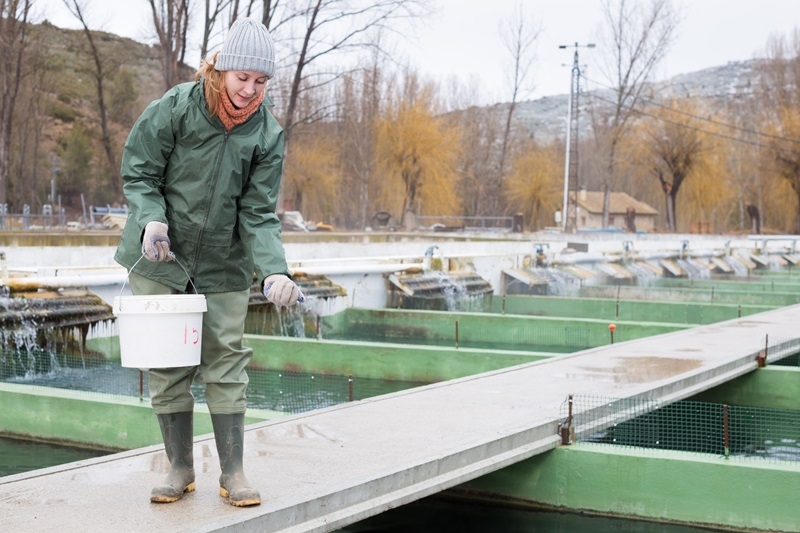This paper authored by Dr Brett Glencross was first published in the May 2025 edition of International Aquafeed
 “Precision nutrition” is one of the emerging hot topics in production animal science, and aquaculture is no different in this regard. So, what is this “precision nutrition” thing anyway? Precision nutrition (PN) is an extension of the broader nutritional concepts into one that focuses on delivering highly specified dietary regimens, based on the specific needs of the animal. It considers an increasing variety of factors; including species, genetics, age/size, health status, environmental conditions, and production goals, in order to maximize animal performance. This precision approach to animal nutrition is rapidly gaining traction in animal production sectors because it offers significant benefits in terms of productivity, animal welfare, and sustainability.
“Precision nutrition” is one of the emerging hot topics in production animal science, and aquaculture is no different in this regard. So, what is this “precision nutrition” thing anyway? Precision nutrition (PN) is an extension of the broader nutritional concepts into one that focuses on delivering highly specified dietary regimens, based on the specific needs of the animal. It considers an increasing variety of factors; including species, genetics, age/size, health status, environmental conditions, and production goals, in order to maximize animal performance. This precision approach to animal nutrition is rapidly gaining traction in animal production sectors because it offers significant benefits in terms of productivity, animal welfare, and sustainability.
Traditional animal feeding practices use nutritional approaches that are typically designed based on broad population averages. In these situations, the dietary needs of an entire group of animals are considered in a generalized manner, and usually assuming ideal conditions, optimal animal health and so on. While this approach has worked well to date to meet the basic nutritional needs of a large population, it does not account for the individual differences and subtleties that exist within that population. Nor does it necessarily optimise the nutrition for changing needs that occur with changing sizes, environmental conditions or disease challenges. Precision nutrition, therefore aims to address this by providing the animals with the right nutrients, at the right time, and in the right amounts based on their current and emerging needs.
The core principle of precision nutrition is specificity. For example, dairy cows may be given different diets depending on their milk production levels, age, and genetic potential. Similarly, poultry farmers may adjust feeding strategies based on breed-specific growth rates or reproductive performance. And salmon famers might adjust feed specifications based on changing water temperatures, emerging disease threats, and consumer expectations (e.g. flesh color or omega-3 levels). By considering the animal's unique characteristics, and the production demands at that time, a precision nutrition approach ensures that nutritional resources are utilized more efficiently leading to better health outcomes and enhanced productivity.
One of the central elements of precision nutrition is the increasing use of data. Advances in technology, such as genetic testing, use of digital twinning and use of sentinel animals, and the application of increasingly sophisticated feed formulations, allow for the collection of vast amounts of information about individual animals. These technologies enable farmers and animal nutritionists to further assess key performance metrics such as body condition, feed intake, growth rates, and omega-3 deposition in almost real-time. Armed with this data, farmers and nutritionists can make more informed decisions about adjusting the animals' diets to improve performance.
A key aim of precision nutrition is to move away from basing diets on crude specifications. This means there is a need to optimize the supply of specific nutrients such as amino acids, omega-3 fatty acids, vitamins, and minerals, at levels that ensure the animals can achieve their full genetic potential. Increasingly this means basing diet formulations on digestible nutrient and energy specifications, so as to ensure the precision supply of critical nutrients. Not only has the application of precision feeding been shown to increase growth rates, but the improved nutrient utilisation also helps precision nutrition to reduce waste and improve feed efficiency. By providing animals with the precise nutrients they require, less feed is wasted, which lowers feed costs and reduces the environmental impact associated with feed production. This is particularly important in the context of sustainable aquaculture, where reducing the ecological footprint of production remains a high priority.
Precision nutrition also offers significant ethical benefits by promoting better animal welfare. By catering to the specific nutritional needs of individual animals, this approach helps to prevent nutritional deficiencies or excesses that could lead to health problems. Furthermore, because animals are healthier and perform better, they are less likely to require medical interventions, which reduces the use of antibiotics and other veterinary treatments.
As we increasingly move towards a precision nutrition approach, we can see potential for significant advancement in animal care and production. By leveraging data-driven approaches to optimize feed design and feeding strategies to specific animal needs, farmers are gaining a powerful tool to better manage animal health, increase productivity, and minimize their environmental impact. As the field of nutrition continues to evolve, precision nutrition is becoming an increasingly important component of the sustainable aquaculture story, which I guess is part of the precision decision we all need adapt to.
-----








